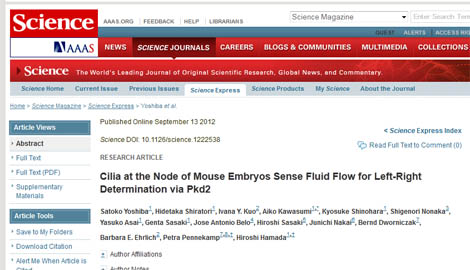 An international group of researchers, including José Belo, principal investigator at the Center for Molecular and Structural Biomedicine (CBME/IBB) and professor at the Department of Biomedical Sciences and Medicine at the University of Algarve, has published a study that may help to understand the etiology of certain human diseases (situs inversus, heterotaxias, congenital heart diseases, etc.) in which the internal distribution of organs is altered and/or damaged, thus contributing to new diagnoses and treatments.
An international group of researchers, including José Belo, principal investigator at the Center for Molecular and Structural Biomedicine (CBME/IBB) and professor at the Department of Biomedical Sciences and Medicine at the University of Algarve, has published a study that may help to understand the etiology of certain human diseases (situs inversus, heterotaxias, congenital heart diseases, etc.) in which the internal distribution of organs is altered and/or damaged, thus contributing to new diagnoses and treatments.
Published last week by the magazine Science, the study states that the correct asymmetric distribution (left-right, ED) of Organs internal organs depends on the interaction of molecules in a highly sensitive structure, the node, located in the central line of the embryo.
This structure is made up of cells that form a central depression and is surrounded by a horseshoe-shaped crown. In turn, in node cells, there are small cilia that when rotate create a unidirectional fluid flow (from right to left) that plays an essential role in breaking ED symmetry in mouse embryos.
However, it remains unclear how this flow is detected by the embryo.
In this article, it is concluded that the Ca2+ channel PKD2, a protein located in the cilia, is required in peri-nodal crown cells to detect this nodal flow.
The results of this group of researchers thus suggest that nodal flow is detected in a PKD2-dependent manner by the cilia of the crown cells located in the node.
Furthermore, the Cerl2 gene, which was initially identified and studied by the CBME team as being essential for the establishment of this ED asymmetry, is the main target of PKD2-mediated signaling in the ED asymmetric distribution.
The article can be consulted here


















Comments